Seoul: A Journey Through Time and Culture
Join this free walking tour to uncover the vibrant history and rich culture of Seoul. Experience the beauty of traditional and modern landmarks in the city.
Time
3 Hours
Stops
9 Places
Distance
?
Gyeongbokgung Palace
Start your journey at Gyeongbokgung Palace, the largest of the Five Grand Palaces built during the Joseon Dynasty, offering a glimpse into Korea's royal history.

Gyeongbokgung Palace (Source: Google Maps)
Gyeongbokgung Palace, the largest of the Five Grand Palaces built during the Joseon Dynasty, is a symbol of Korea's royal heritage. Completed in 1395, it served as the main royal palace for centuries. The palace showcases beautiful architecture, including the iconic Geunjeongjeon Hall, where important state ceremonies were held. The grounds are expansive, featuring serene gardens and historical structures that reflect the grandeur of the Joseon era. Visitors can witness the changing of the guard ceremony, which adds to the historical ambiance of the site. Gyeongbokgung is not just a place of beauty but also a significant cultural landmark, representing the resilience and history of the Korean people throughout invasions and occupations.
National Folk Museum of Korea
Located within Gyeongbokgung Palace, this museum showcases the daily lives and cultural heritage of Korean people through various artifacts and exhibits.

National Folk Museum of Korea (Source: Google Maps)
Nestled within the grounds of Gyeongbokgung Palace, the National Folk Museum of Korea offers a profound glimpse into the daily lives and cultural heritage of the Korean people. Established in 1945, the museum houses an extensive collection of artifacts that illustrate the evolution of Korean life from ancient times to the present. Visitors can explore exhibits showcasing traditional clothing, tools, and household items, providing insight into the customs and practices of different historical periods. The museum's outdoor exhibition area features reconstructed traditional houses, allowing visitors to experience the architectural styles of various regions in Korea. This museum serves as a vital resource for understanding the cultural identity of Korea, making it a must-visit for those interested in the nation's history.
Bukchon Hanok Village
A short walk from the palace, Bukchon Hanok Village is a picturesque area filled with traditional Korean houses, known as hanoks, offering a step back in time.

Bukchon Hanok Village (Source: Google Maps)
Bukchon Hanok Village is a captivating area that preserves the traditional Korean architectural style known as hanok. Located between Gyeongbokgung Palace and Changdeokgung Palace, this village offers a unique opportunity to step back in time and experience the charm of historical Seoul. The neighborhood features hundreds of hanoks, many of which date back to the Joseon Dynasty. These houses are characterized by their wooden frames, tiled roofs, and beautiful courtyards. As you stroll through the narrow alleys, you'll discover art galleries, tea houses, and craft shops that celebrate Korean culture. Bukchon Hanok Village is not only a picturesque setting but also a living community where tradition and modernity coexist, making it a significant cultural heritage site in the heart of the city.
Jogyesa Temple
Continue to Jogyesa Temple, the chief temple of the Jogye Order of Korean Buddhism, known for its beautiful architecture and serene atmosphere.
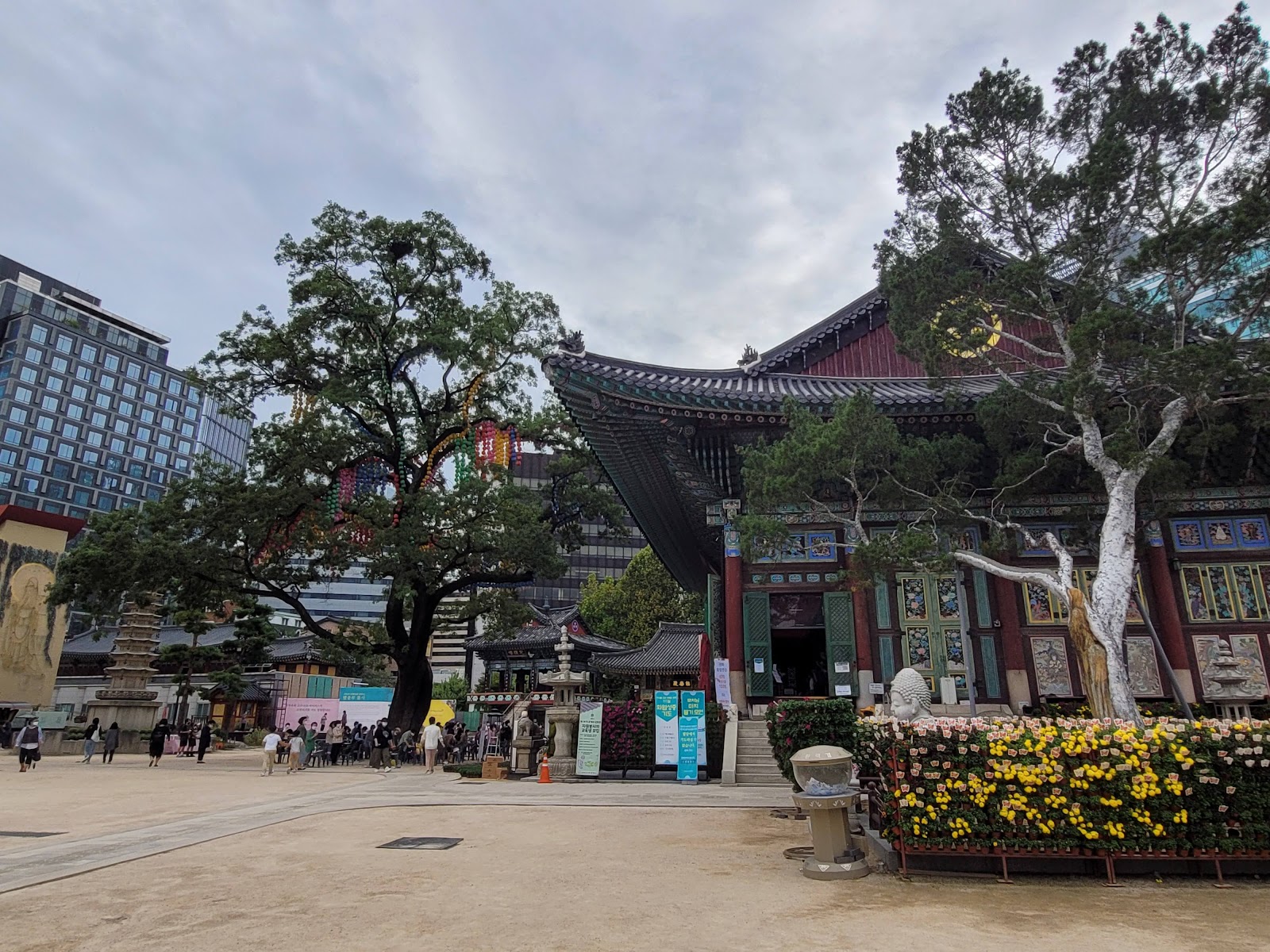
Jogyesa Temple (Source: Google Maps)
Jogyesa Temple stands as the chief temple of the Jogye Order of Korean Buddhism, known for its tranquil atmosphere and stunning architecture. Established in the late 14th century, this temple serves as a spiritual center for Buddhists in Korea. The temple grounds are beautifully landscaped, featuring ancient trees and colorful lanterns that create a serene environment for meditation and reflection. The main hall, Daeungjeon, houses a large statue of Buddha and is adorned with intricate decorations. Throughout the year, Jogyesa Temple hosts various cultural events and ceremonies, including the Lotus Lantern Festival, which attracts visitors from around the world. This temple is a vital part of Korea's spiritual heritage and offers a peaceful retreat amidst the bustling city.
Insadong Street
Just a few minutes away, Insadong Street is famous for its traditional tea houses, antique shops, and art galleries, perfect for experiencing Korean culture.
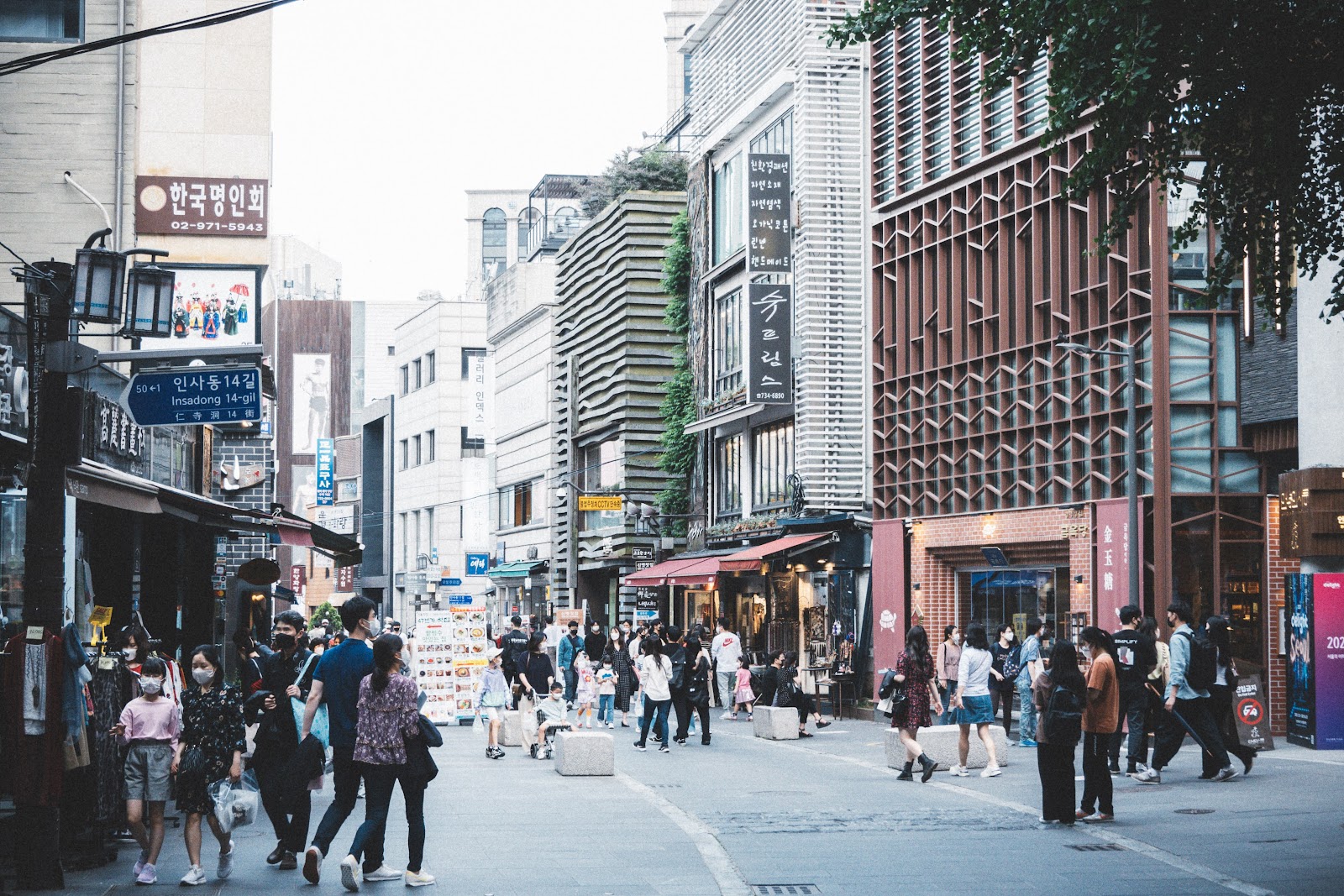
Insadong Street (Source: Google Maps)
Insadong Street is a vibrant cultural hub in Seoul, renowned for its traditional tea houses, antique shops, and art galleries. This area has been a center for Korean culture and arts for centuries, making it a must-visit for those seeking to experience the essence of Korea. Visitors can wander through the narrow streets lined with shops selling traditional crafts, pottery, and calligraphy materials. The street is also famous for its tea houses, where you can savor authentic Korean teas and snacks. Insadong is a place where artisans showcase their work, and cultural events often take place, including performances and art exhibitions. The blend of history and modernity in Insadong makes it a unique destination for both locals and tourists alike.
Cheonggyecheon Stream
Walk to Cheonggyecheon Stream, a modern public recreation space that runs through downtown Seoul, offering a refreshing break in the heart of the city.

Cheonggyecheon Stream (Source: Google Maps)
Cheonggyecheon Stream is a remarkable urban renewal project that transformed an old highway into a picturesque public space in the heart of downtown Seoul. The stream stretches for approximately 11 kilometers and offers a refreshing escape from the city's hustle and bustle. Along its banks, visitors can enjoy beautifully landscaped pathways, art installations, and tranquil spots for relaxation. The stream is lined with historical markers that tell the story of Seoul's development, making it an educational experience as well. Cheonggyecheon is especially enchanting at night when the illuminated bridges and surrounding buildings create a stunning atmosphere. This revitalized space not only enhances the urban landscape but also promotes eco-friendliness and community engagement, making it a popular spot for both locals and tourists.
Gwangjang Market
Head to Gwangjang Market, one of Korea's oldest traditional markets, where you can sample authentic Korean street food and snacks.
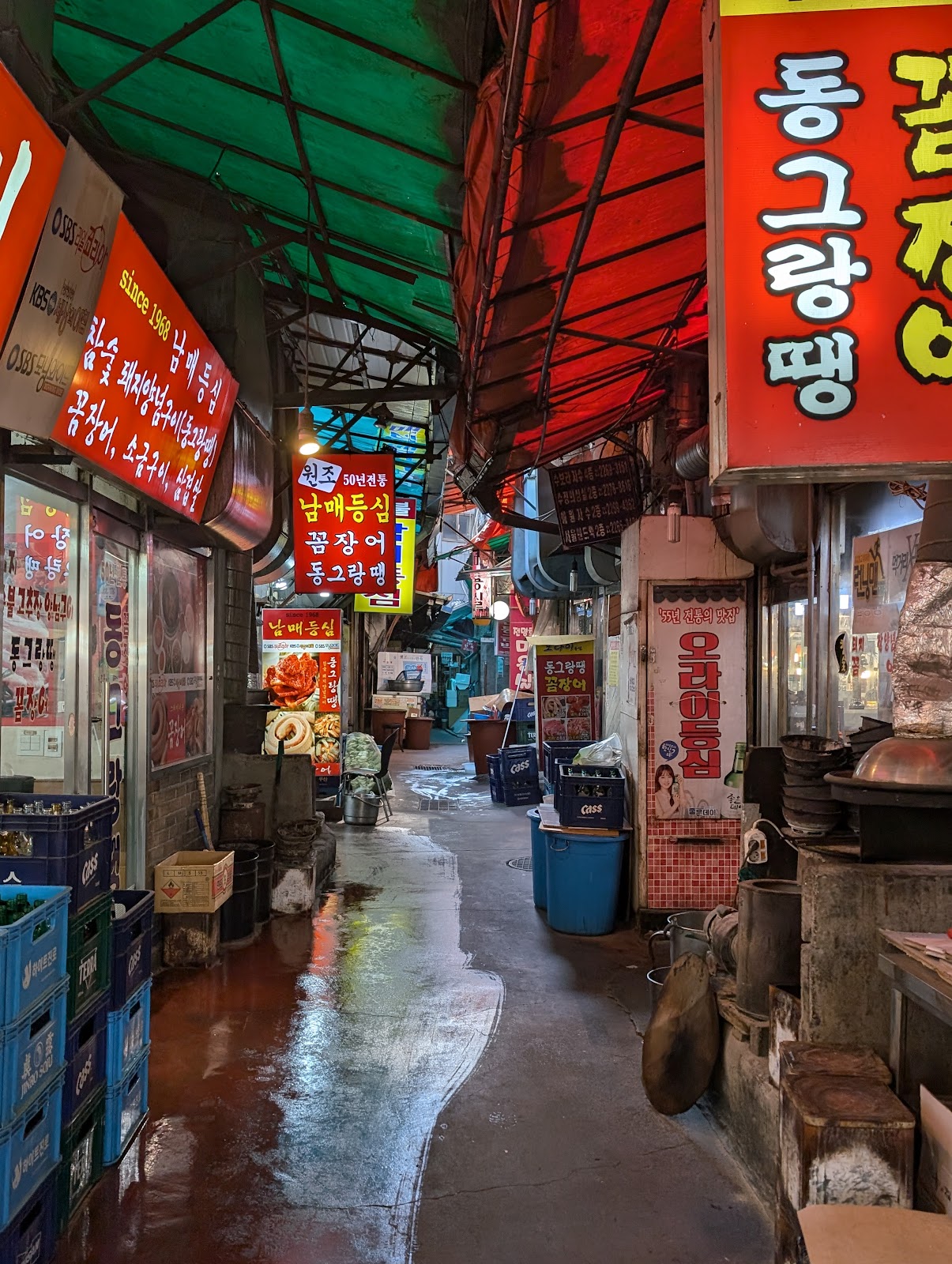
Gwangjang Market (Source: Google Maps)
Gwangjang Market is one of Korea's oldest traditional markets, famous for its vibrant atmosphere and delicious street food. Established in 1905, this market is a must-visit for food enthusiasts looking to sample authentic Korean cuisine. The market features a variety of stalls offering an array of dishes, including bindaetteok (mung bean pancakes), bibimbap, and tteokbokki (spicy rice cakes). Gwangjang Market is not just a place to eat; it also showcases traditional textiles and handmade goods, reflecting the rich cultural heritage of Korea. The bustling environment, filled with the sounds of vendors and the aromas of cooking, creates an unforgettable experience. Gwangjang Market serves as a testament to Korea's culinary traditions and is a beloved destination for both locals and tourists seeking to indulge in the flavors of the country.
Dongdaemun Design Plaza (DDP)
Visit the Dongdaemun Design Plaza, a major urban development landmark known for its neofuturistic architecture and cultural exhibitions.
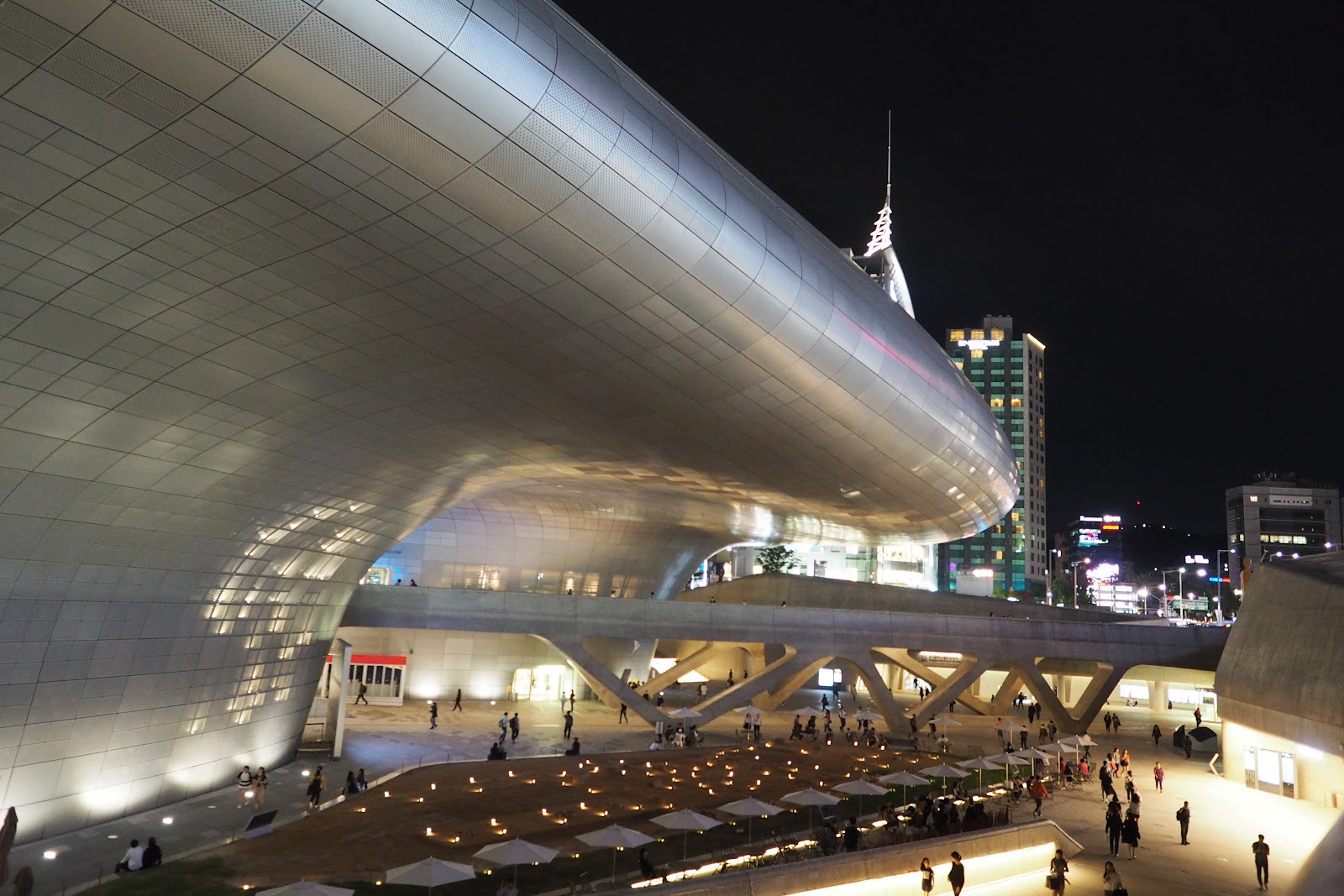
Dongdaemun Design Plaza (DDP) (Source: Google Maps)
Dongdaemun Design Plaza (DDP) is a major urban landmark in Seoul, celebrated for its neofuturistic architecture designed by the renowned architect Zaha Hadid. Opened in 2014, DDP serves as a cultural hub that hosts various exhibitions, fashion shows, and events. Its unique design features flowing forms and a seamless integration with the surrounding landscape, making it a striking addition to the city. The plaza is home to a design museum, conference halls, and exhibition spaces, showcasing contemporary Korean design and innovation. DDP also features a beautiful rooftop garden that provides panoramic views of the city, making it a popular spot for visitors. This architectural marvel not only represents Korea's forward-thinking design philosophy but also serves as a gathering place for creativity and cultural exchange.
Heunginjimun (Dongdaemun Gate)
Conclude your tour at Heunginjimun, also known as Dongdaemun Gate, a historic city gate that once served as a major point of defense for the city.
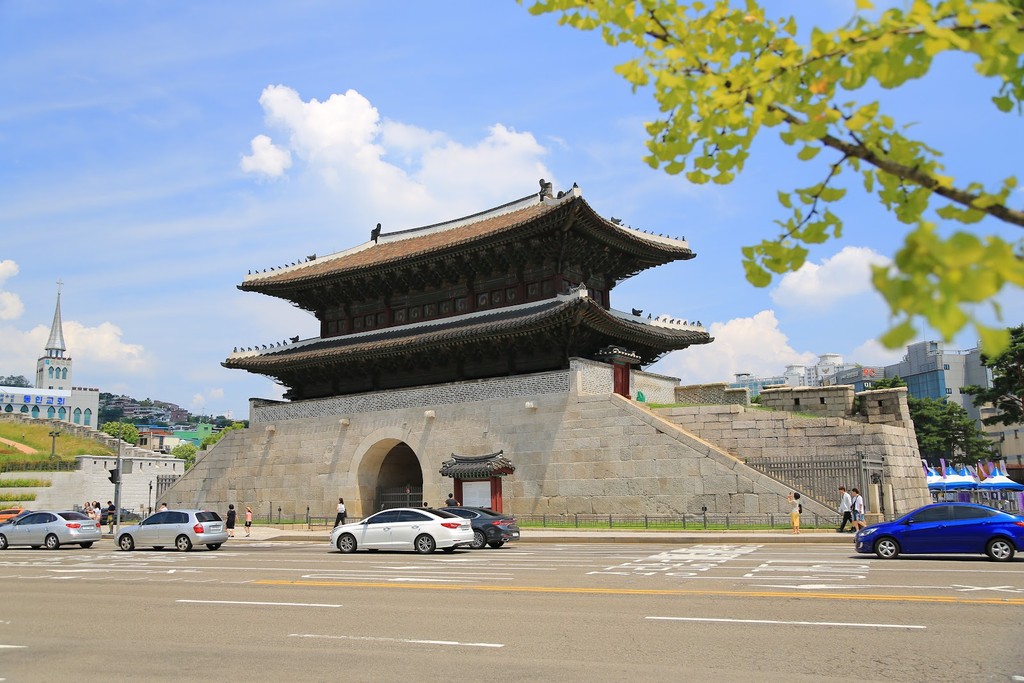
Heunginjimun (Dongdaemun Gate) (Source: Google Maps)
Heunginjimun, commonly known as Dongdaemun Gate, is a historic city gate that once served as a major point of defense for Seoul during the Joseon Dynasty. Constructed in 1396, it is one of the eight gates that surrounded the city, symbolizing its fortifications. The gate is notable for its impressive architecture, featuring a stone base and a wooden structure above, which reflects the traditional Korean style. Over the years, Heunginjimun has undergone restoration to preserve its historical significance. Today, it stands as a cultural landmark and a popular tourist attraction, representing the rich history of Seoul. The surrounding area has transformed into a vibrant shopping district, blending the old with the new, where visitors can experience both the historical and modern aspects of the city.

Your travels, your rules.
Create your own Free Walking Tours.
Set your preferences, distances and anything you want to do or see.
Completely free, no payment required.